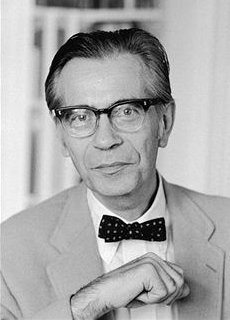
Last week I promised to explain the origins of the blog’s title.
The short version:
It comes from Richard Hofstadter’s 1963 essay “The Paranoid Style in American Politics”. I thoroughly suggest reading it, as many of its points remain valid today.
The longer one:
As above, but with more information. The term itself is a peculiar one. Like “conspiracy theory” it instantly evokes some connotations: “paranoid”, so connected with the mental illness, full of suspicion, suspecting enemies and plots at every corner. “Style”, so a way of expression, a type of a rhetoric that includes a number of set characteristic elements. One American professor told me once, that when he met Hofstadter as a student, he was impressed by his ability to coin simple yet telling definitions. The “paranoid style” is definitely one of them.
It may seem as surprising that the essay does not simply have “conspiracy theory” somewhere in the title. It was, after all, written shortly after the “Red Scare” of McCarthyism, in the nadir of the Cold War – the Cuban Missile crisis most notably, and was printed shortly after the assassination of president John F. Kennedy. Yet what Hofstadter focused was the presidential campaign of 1964, and the possible victory of “Mr. Conservative”, the Republican Barry Goldwater, a politician, who supported Joseph McCarthy till the end.
What scared Hofstadter more than the possibility of a radical Right at the helm, as he himself was a leftist scholar, a Marxist in youth, was the language they used. He saw it as emotional, populist, and dangerous to a democratic society in which citizens should vote according to reason, not emotion. This was what he claimed Goldwater did, the latest incarnation of the paranoid style in American history. Indeed, at the very beginning of his text Hofstadter provides a number of examples of curiously similar rhetoric, as far back as the pre-Revolutionary America.

So what is this paranoid style anyway? It is a style, we read, just like the baroque style, “a way of seeing the world and of expressing oneself”. The adjective “paranoid” is, however, used in a different manner. A paranoiac is believes everyone is out there to get him. A paranoid spokesman (the user of the style) believes that everyone is out there to get his country. He channels this anxiety through tales of a conspiracy created to destroy one’s homeland and way of life. In essence, the paranoid style is the tool, the blueprint, from which most conspiracy theories are formed. They may differ depending on the place, the circumstances, and time, but the style remains constant.
Hofstadter defined the elements of the paranoid style with simple, but alluringly all-encompasing terms. First, he concentrates on the conspiracy itself as a “motive force” in history. The members of such secret cabal can do virtually anything, from controlling local events to orchestrating entire wars. Unlike the “normal” political or economic entities, the conspiracy is not bound by laws of neither man nor nature. Moreover, it is inherently and invariably evil – Hofstadter uses the term “amoral superhuman”. In essence, the conspirators do evil because it is in their nature and, if they cannot be stopped, all will be lost. This apocalyptic tinge is inherent of the conspiracy theories' text – it call for action to utterly dismantle the conspiracy. As such, no negotiations or compromises are possible.
The paradox of this apocalyptic struggle lies in the fact that a conspiracy can never be defeated – the final confrontation, as Hofstadter argues, never arrives and the world remains perpetually on the cusp of either eternal tyranny or final liberation. As such, the conspiracy theorist, or paranoid spokesman to use Hofstadter's term, always collects more and more new data to prove the existence of the conspiracy. The most valuable of those are defectors from the conspiracy – people who not only bring “insider knowledge” but prove that the conspiracy is not that much “all-powerful”. Finally, some of the conspiracy theorists' and their believers act much like a conspiracy themselves, they become secretive, and demand total obedience from their followers.

“The Paranoid Style...” is highly critical of conspiracy theories. To its author they are a dark side of democracy, populist propaganda that offers an easy, simplified, and emotional answer instead of a balanced, rational analysis of a social problem. This notion has been rejected by some contemporary scholars. Mark Fenster, for example, claimed that while the paranoid style indeed distorts reality, its occurrence can tell us much about a given society, its history and problems. After all, conspiracy theories are created for some, often legitimate, reason.
The above text may seem a bit theoretical and dry, but I decided to write this way for a reason. Hofstadter's examples can be found in his essay, and are, at best, a half of a century old. My future posts will attempt to feature some of the contemporary movements or sites that employ the paranoid style (or conspiracy theory), and to demonstrate both how the style works, and how we can use it to learn form a given “radical” or "crackpot” group, be it the Tea Party, 9/11 Truth Movement, or the Wall Street protesters. All such movements are deeply rooted in American culture, in its hopes, history, and anxieties, and are never some isolated, marginal trends.
No comments:
Post a Comment